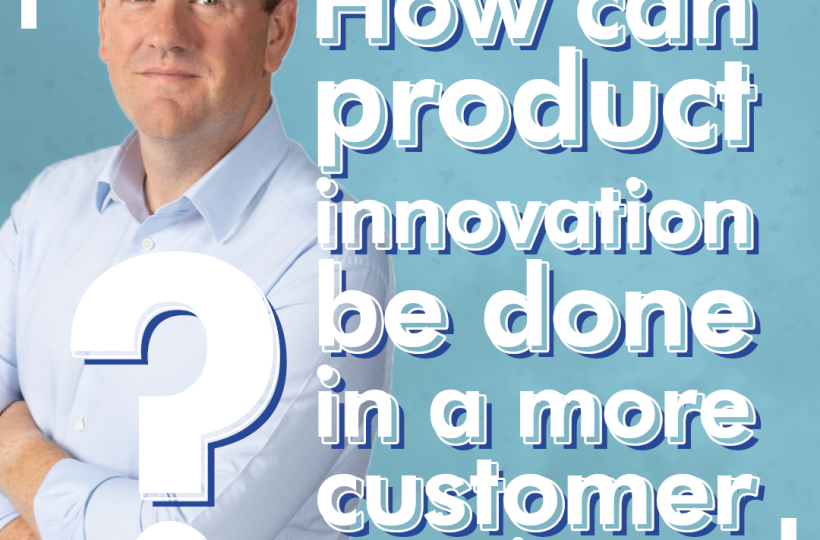How can product innovation be done in a more customer-centric way

1. Find a way to understand your customers
Now, this one may seem obvious at first sight, but many companies still get this wrong. You need to chase a profound understanding of your consumers’ expectations, habits and behavior. The good news is that there are many ways to go about this. There’s a treasure trove of data that you can use for that. You can analyze consumer behavior on your website, social media callouts, customer service calls or emails, data from the competition etc. You can organize focus groups to find out how they are using your products. You can use market research. Use as many methods as possible to get the most complete picture of how your customers behave.
Don’t forget this one crucial detail, though: avoid basing all of your conclusions on success data only, while ignoring all the information that comes from your mistakes. I truly believe that your biggest mistakes can be turned into your greatest source of insight and ideas. Let me illustrate with this story I came across a few days ago. In WWII, the army tried to determine how they could make their planes stronger so that they could minimize the casualties. They decided to armor the planes, but as this would make them heavier, this would also make them less agile and use more fuel.
So they decided something which seems quite logical at first, based on the data they received. When American aircrafts came back from Europe, they were covered in bullet holes, that were concentrated in these places:
So, understandably, the army leader’s intuition was to armor the places with the most holes to protect the planes. But statistician Abraham Wald disagreed. He thought they should better armor the nose area, engines, and the mid-body. The reason why is that they were analyzing the survivors, the planes that made it back. This meant that the planes that did not come back, had been hit in different places, and it was these places that they needed to protect with armor. The psychology behind this is called survivorship bias or survival bias: the logical error of concentrating on the people or things that made it past some selection process and overlooking those that did not, typically because of their lack of visibility. This can lead to false conclusions. So, when you’re trying to understand your customers, don’t fall for the survival bias trap. Analyze your failures too.
2. Include expert users in the innovation process
A second way to help your innovation from failing is to involve your customers in the innovation process. I’m not talking about your average customer, here. I’m talking about the expert users.
Ask yourself who the experts in your domain are. If you’re in gaming, it’s those people who are gaming every single day. If you’re in real estate, it’s those who own 10 apartments and are looking for more investments. If you’re in financial services, it’s the active users of all your tools and solutions. Every industry has expert users. Keep them as close as you can and involve them in the innovation process. This will help you receive direct and highly relevant feedback.
I’m sure that some of you are thinking, “well, this does not make sense to us since we are focusing on the average customer”. You might think that you don’t want to create something for this expert customer. I think that’s a mistake, though. Expert users are usually the first clients of a product or service. They’re generally the ones that start spreading the news and convince the majority – the so called average customer – to follow your lead. So co-creating solutions that excite them makes a lot of sense that way and will help you become more customer focused in your innovation.
3. Understand that a product launch is just the beginning
The third tactic to make your innovation customer-proof is to never perceive the launch of a product as the end of the cycle. To the contrary, it’s a pretty essential beginning: when you put something into the marketplace, people will start using it and experimenting with it. Use that in order to collect real life feedback to see if you made the right choices with that innovation. Did you communicate about the right circumstances to use them, or are people using them differently? Are you talking to the right people? What do they like and dislike? And then go back to the drawing board with that information. And be very critical after about what you need to change rapidly in the first three or four weeks in order to make the launch more successful.
In that aspect, I like to give the same advice as Steve Blank offers to people: “Get out of the building”. What he means is that, in order to check if your assumptions about your solutions and innovations are correct: just talk to people, but don’t talk to sell, talk to listen and learn. He calls this “customer discovery”, and that’s an essential part of the innovation process. I loved the suggestion that he gives at the end of this little video: at the end of the conversation, ask the customer “what should I really have asked you” which can sometimes trigger information that you’d otherwise never have received: the “unknown unknowns” as Donald Rumsfeld would have called them. But above all: use that information to make your innovation better and then go back and ask again. Innovation is never “done”, it’s a thing of permanence and adjustment.
So, small recap. These are my three top tips for those companies who want to organize their product innovation in a more customer centric way:
- Find a way to understand your customers
- Include your expert users in the innovation process
- Understand that the product launch is just the beginning
